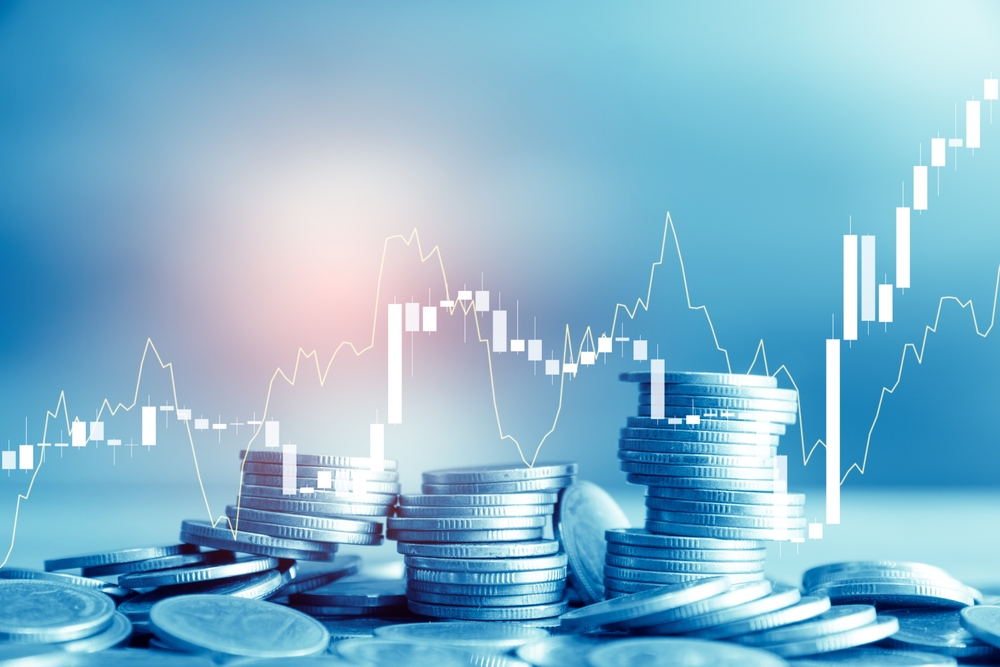Tuesday morning feels like one of those days when every investor’s worst nightmare comes true simultaneously. Stock futures are tanking, oil prices are spiking, Bitcoin is crashing, and the entire financial system seems to be having an existential crisis about what comes next. This isn’t just a bad day—it’s the kind of market chaos that makes even seasoned traders question their life choices.
The perfect storm of geopolitical tensions, regulatory uncertainty, and economic confusion has created conditions where nobody wants to own anything risky, leading to a massive flight to safety that’s making traditional safe havens look like the only rational investment choice. When markets start moving like this, it usually means something fundamental has shifted in how investors view risk and reward.
What makes this morning particularly unsettling is how multiple crisis factors are converging at once, creating a feedback loop where each problem amplifies the others. Oil spikes make inflation worse, which makes the Fed’s job harder, which makes everything else more uncertain, which makes people sell everything and ask questions later.
Geopolitical chaos is sending everyone running for cover
The Middle East situation has escalated to the point where investors are genuinely worried about supply chain disruptions and energy security, not just abstract geopolitical risks. When oil prices surge 2% in a single morning, it’s because traders are pricing in real scenarios where shipping lanes get blocked or production facilities get damaged.
International summits that were supposed to provide stability and clarity have instead created more confusion and political tensions. The diplomatic failures and policy disagreements emerging from these meetings have left investors with more questions than answers about global cooperation and trade relationships.
The uncertainty isn’t just about what might happen—it’s about how quickly situations can deteriorate when multiple conflicts and tensions exist simultaneously. Markets hate uncertainty, but they especially hate uncertainty that could spiral into economic disruption within days or weeks rather than months.
Supply chain vulnerabilities that were exposed during the pandemic are now being stress-tested again by geopolitical tensions. Investors are realizing that just-in-time manufacturing and global trade networks are incredibly fragile when political situations become unstable.
Energy security concerns are becoming front-page news again as conflicts threaten critical infrastructure and transportation routes. The realization that energy supplies can be weaponized or disrupted has investors rethinking everything from transportation costs to manufacturing viability.
Oil prices are creating an inflation nightmare
West Texas Intermediate crude approaching $83 per barrel represents more than just energy market volatility—it’s a direct threat to the inflation progress that the Federal Reserve has been fighting to achieve. Higher oil prices flow through to every aspect of the economy, from transportation costs to manufacturing inputs.
OPEC+ production cuts have removed millions of barrels from global supply at exactly the wrong time, when geopolitical tensions are already creating supply concerns. This coordinated reduction in production capacity means that even minor supply disruptions could create dramatic price spikes.
The ripple effects of higher oil prices extend far beyond gas stations to affect everything from food costs to shipping expenses. When energy gets expensive, it makes everything else more expensive, creating the kind of broad-based inflation that central banks struggle to control.
Corporate profit margins are particularly vulnerable to oil price spikes because energy costs are often impossible to pass through to consumers immediately. This creates a squeeze where companies absorb higher costs while hoping demand remains strong enough to eventually support price increases.
Consumer spending patterns shift dramatically when energy costs spike, as people reduce discretionary spending to accommodate higher gasoline and heating bills. This spending reallocation can cascade through the economy and affect sectors that seem completely unrelated to energy markets.
Bitcoin’s crash reveals crypto’s fragility
Bitcoin’s fall below $106,000 demonstrates how quickly cryptocurrency markets can reverse course when sentiment shifts. The digital asset that was supposed to be a hedge against traditional financial system problems is proving to be just as vulnerable to panic selling as any other speculative investment.
Regulatory tightening around cryptocurrency markets has created an environment where investors are questioning the long-term viability of digital assets. When governments start implementing stricter oversight and taxation, it changes the fundamental value proposition of cryptocurrencies.
The liquidity issues that plague cryptocurrency markets become particularly problematic during stress periods, when large sell orders can move prices dramatically. Unlike traditional markets with extensive market-making infrastructure, crypto markets can experience violent price swings from relatively small trading volumes.
Profit-taking behavior among cryptocurrency investors suggests that many people view digital assets as speculative investments rather than long-term stores of value. When uncertainty increases, these investors quickly convert crypto holdings back to traditional assets or cash.
The correlation between cryptocurrency prices and traditional risk assets has increased dramatically, undermining the diversification benefits that crypto was supposed to provide. When everything falls together, it defeats the purpose of holding alternative investments.
The Federal Reserve is caught in an impossible situation
Cooling retail sales data suggests that consumer spending is weakening, which would normally support the case for lower interest rates to stimulate economic activity. However, rising oil prices and persistent inflation concerns make rate cuts potentially counterproductive by adding fuel to inflationary pressures.
The Federal Reserve’s dual mandate of maintaining employment and price stability is becoming increasingly difficult to balance when external factors like geopolitical tensions and energy prices are creating conflicting economic pressures. Rate policy that helps one objective might hurt the other.
Market expectations for rate cuts are being constantly revised as economic data and geopolitical events create new considerations for monetary policy. This uncertainty about Fed policy direction makes it difficult for investors to make confident long-term investment decisions.
The timing of any potential rate changes has become crucial, as premature cuts could reignite inflation while delayed cuts could allow economic weakness to become entrenched. This balancing act creates policy uncertainty that markets struggle to price effectively.
International monetary policy coordination has become more complex as different countries face different inflation and growth challenges. The lack of coordinated global monetary policy creates currency volatility and complicates international investment decisions.
Investor psychology is shifting toward pure defense
The flight to safety mentality that’s driving current market behavior reflects a fundamental shift in how investors view risk-reward trade-offs. When uncertainty is high and potential losses seem large, the psychology shifts toward capital preservation rather than capital growth.
Portfolio repositioning toward defensive assets and away from growth investments represents more than just temporary caution—it reflects a reassessment of what kinds of returns are realistic given current global conditions. This shift can become self-reinforcing as selling pressure creates more uncertainty.
The holding pattern that many investors have adopted reflects the difficulty of making confident investment decisions when so many variables are in flux. Rather than trying to predict outcomes, many investors are choosing to wait for more clarity before making major portfolio changes.
Risk management strategies that worked during stable periods are being stress-tested by conditions that combine multiple types of uncertainty simultaneously. Traditional diversification approaches may not work when geopolitical, economic, and regulatory risks all increase at the same time.
What this means for your money right now
Market volatility like this morning’s chaos creates both risks and opportunities, but the timing and execution of any investment decisions become crucial when prices are moving rapidly based on news and sentiment rather than fundamental values.
Diversification strategies need to account for the possibility that traditional asset correlations break down during stress periods, when assets that normally move independently start moving together in response to broad-based uncertainty.
Cash and short-term Treasury securities are providing the stability that stocks and cryptocurrencies cannot offer during uncertain periods. While these assets don’t provide growth potential, they preserve capital and provide flexibility to take advantage of opportunities when markets stabilize.
The key to navigating volatile markets is maintaining perspective about long-term goals while being prepared for continued uncertainty in the short term. Markets eventually stabilize, but the timing and catalyst for that stabilization often comes from unexpected sources.
Understanding that market volatility reflects uncertainty rather than fundamental economic collapse helps maintain rational decision-making during emotional periods when fear and greed drive irrational behavior.
The current market environment requires patience and discipline rather than reactive decision-making based on daily price movements. The investors who succeed during volatile periods are typically those who can maintain their strategies while others panic or get caught up in short-term movements.
This morning’s market chaos serves as a reminder that global interconnectedness means that problems anywhere can quickly become problems everywhere, requiring investment strategies that account for the possibility of simultaneous crises across multiple asset classes and geographic regions.

















